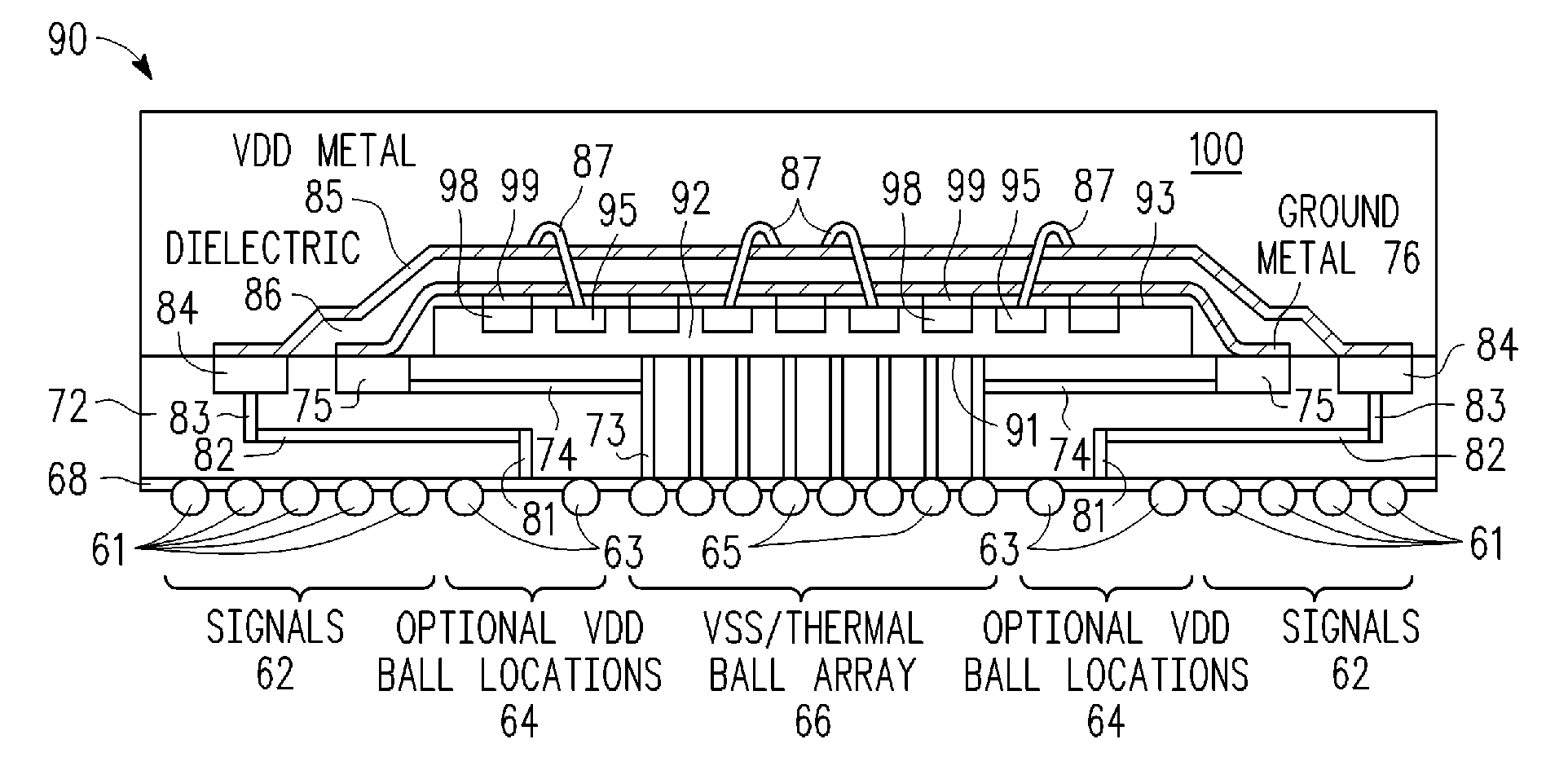Power Lead-on-Chip Ball Grid Array Package
a power lead and chip technology, applied in the field of semiconductor devices, can solve the problems of inability to connect the number of signal and power lines required by today's devices, the conventional approach to electrically connecting signals and power to the integrated circuit die, and the design and packaging of significant challenges of these devices
- Summary
- Abstract
- Description
- Claims
- Application Information
AI Technical Summary
Problems solved by technology
Method used
Image
Examples
Embodiment Construction
[0018]A method and apparatus are described for encapsulating a semiconductor die in a package in which an encapsulated leadframe structure is bonded and connected to an integrated circuit die so as to distribute power and / or ground to die level bond pads distributed across the die area. In addition to improving power distribution across the die area, the encapsulated leadframe structure also provides additional contact areas at the periphery of the die for wirebonded signal lines. The leadframe structure is electrically connected to an off-chip power and / or ground supply through electrically conductive paths formed in a carrier substrate (e.g., solder balls, conductive traces, vias, contact pads). In addition, the leadframe structure is formed from one or more patterned conductor layers that are disposed over the integrated circuit die area to make electrical contact with an array of power and / or ground supply terminals in the integrated circuit die. To distribute power across the d...
PUM
 Login to View More
Login to View More Abstract
Description
Claims
Application Information
 Login to View More
Login to View More - R&D
- Intellectual Property
- Life Sciences
- Materials
- Tech Scout
- Unparalleled Data Quality
- Higher Quality Content
- 60% Fewer Hallucinations
Browse by: Latest US Patents, China's latest patents, Technical Efficacy Thesaurus, Application Domain, Technology Topic, Popular Technical Reports.
© 2025 PatSnap. All rights reserved.Legal|Privacy policy|Modern Slavery Act Transparency Statement|Sitemap|About US| Contact US: help@patsnap.com



